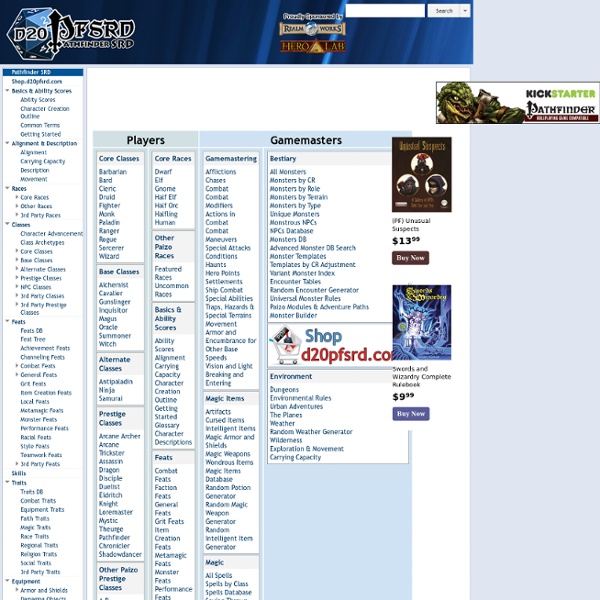Pathfinder_OGC

All Outta Bubblegum - the RPG
All Outta Bubblegum This game is copyright 2001, Michael "Epoch" Sullivan and Jeffrey Grant. If you want to repost it or whatever, drop me an email. Characters in All Outta Bubblegum have one stat -- Bubblegum. Bubblegum always starts out at 8. Resolution Any action which does not fall under the broad category of "kicking ass" is resolved by rolling a d10. Any action which falls under the broad umbrella of "kicking ass" is also resolved by rolling a d10. Losing Bubblegum Whenever you fail a non-combat roll, you lose a stick of Bubblegum. Bubblegum also rates your damage. Zero Bubblegum When you lose your last stick of bubblegum, you are officially all outta bubblegum. However, bear in mind that it's relatively easy to trap a zero-bubblegum person in a situation he's totally incapable of dealing with. There ya go.
Awesome Dice is Where to Buy Gaming Dice Online
Magic in the Blood: A guide to Eldritch Heritage and Sorcerer Bloodlines
Pathfinder Bard Guide
Related:
Related:



